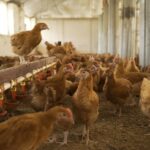The global swine industry is going through unprecedented challenges. On the one hand, the threat of the African Swine Fever virus is global, despite the fact it hasn’t arrived in all markets. The virus is today alive among the wild boars in the Polish and Belgian forests. Every day it keeps gaining a few more meters to the border, threatening the German swine industry, one of the largest in the European Union.
If this happens, we might be seeing important changes to the pork supply chain on the meat market worldwide – in Europe in addition to current issues in the USA meat plants. The profitability of swine businesses depends in many ways on the export capacity of large corporations based in Germany, Spain, Denmark, etc.
On the other hand, the presence of COVID-19 in most countries is changing human behavior, meat consumption at home, and the way we look at the future. Perhaps a virus overload via the news, some “fake news” conveying wrong messages on what’s coming, and suddenly we feel the future will never be the same.
The future of the swine industry
At least for the swine industry, the future will indeed never be exactly the same. We will be facing different challenges. Some of these will be structural, such as the issue of decreased manpower and how to substitute manpower by machines, through the implementation of Precision Livestock Farming, for instance.
We are also facing important health challenges to our animals: not just ASF, but also new and more aggressive PRRS strains, among other pathogens. Our sows´ production capacity is increasing annually, yet in some cases 25% of the new-born piglets are lost from birth to market. Increasingly, we may start to see increased levels of mortality not only in the nursery but in fattening pigs and sows as well.
It is becoming clearer all the time: the future of the global swine industry lies in producing more pigs with reduced antibiotics. To stay the course, we need to take further action and implement corrective measures.
Why we should remove antibiotics in pig production
Pressure from stakeholders and regulators
There is, and there will be, increasing pressure from many stakeholders worldwide to work toward pig production with reduced or no antibiotics. Meat suppliers, slaughterhouses and processors, governments at different levels, and, of course, the European Union – all are demanding reductions in the level of antibiotics in livestock production.
There is also an increasing awareness at the global societal level regarding antimicrobial resistance related to antibiotic usage in farming production. Consumer pressure will grow exponentially as the terrible COVID-19 experience will be “digested” by the global population.
Pressure to accede to the pork market
There is yet another important reason to start working in that direction: the global swine meat market. Today, China’s pork meat shortage is opening the market. Now any producer could potentially sell meat, either to China or to any other country. We are starting to see moves from companies in the USA or Brazil banning the use of Ractopamine in their operations because they want to get access to the ractopamine-free market (Europe & Asia, over 70% of the global population).
According to M. Pierdon (AASV 2020 Proceedings), there will be two types of markets: the “Niche ABFree” and the “Commodity ABFree”. Companies will have to analyse what their future is on the meat market. Not all the producers may be willing to enter this new phase, but for sure many will try.
Strategies for antibiotic reduction
In Europe, the time has arrived. Zinc oxide will be banned in June 2021 and there is now more than a trend in production with less or no antibiotic use. In some cases, there is a need; in others, this is simply profitable.
Challenges to antibiotic reduction
Producing pigs completely without antibiotics is not easy, and not affordable for all. Initially we may have to give up some performance parameters in order to achieve the balance between what we want and what we can achieve in animal performance. But the time will arrive when these two objectives will converge; there is no alternative.
To that end, we will have to include in our pig production strategy all the available tools and technologies: genetic selection, immunization against some key pathogens, environmental control (mandatory but often forgotten), early detection of diseases, etc.
In this new era we are entering, nutrition and feed additives will play a key role. It will be crucial to find solutions targeting the microbiome’s stabilization and diversification, creating and maintaining healthy farms and achieving all the performance parameters.
Do we have the tools for antibiotic reduction?
Even today there are companies able to produce completely antibiotic-free pigs – proof that yes, the tools are already in place.
Nevertheless, for most producers, the answer to – Can we produce without antibiotics? is most likely “probably not”. This will require a holistic approach, given the specific case of piglets.
The microbiome of the piglet is strongly influenced by birth and the subsequent weeks. What, then, are the elements that will be part of this new game that comprises a new approach?
-
- The colostrum intake & the management of the piglets
- Antibiotic usage and its influence on the gut
- The piglets’ microbiome and its evolution during the periweaning period
- The weaning process, appetite, and water intake
- Zinc oxide removal and its influence on the microbiome
- The immune system and the relationship with the GIT status
- Inflammation and its modulation at the gut level
- The health status and the effect on the concomitant infections: which ones are key and which ones are secondary pathogens
- The all-important biosecurity, management, and hygiene
To summarize: there is no one tool, but rather a holistic approach to face this new challenge that the swine industry is facing nowadays. The answer is not a silver bullet, but a journey that we all must undertake.
Available in Spanish here.
















